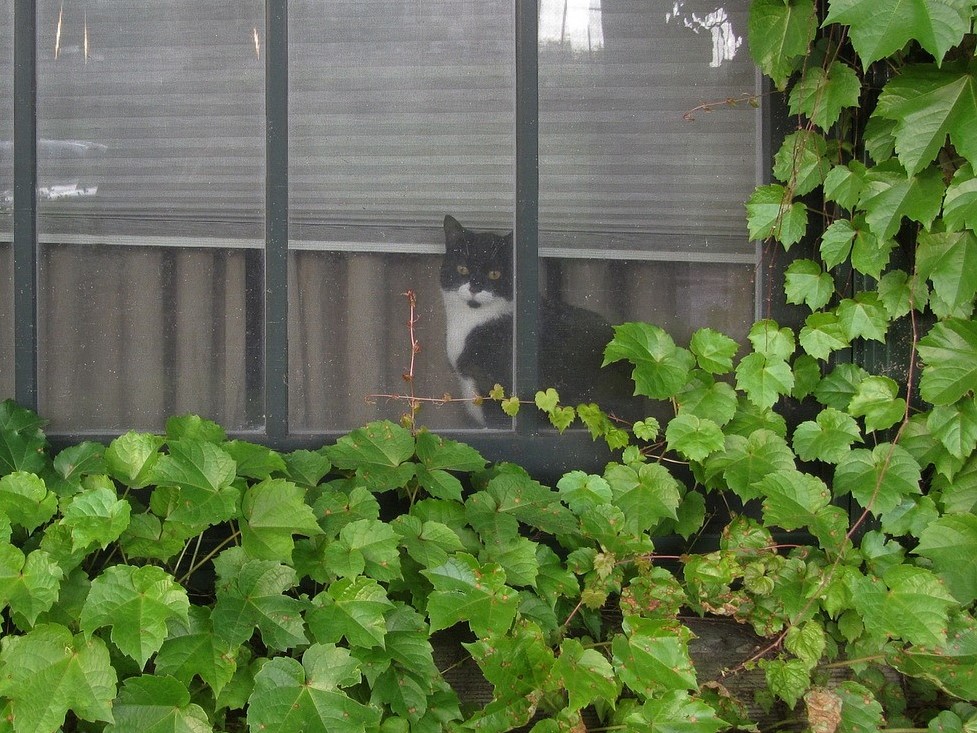Some animal behaviourists, animal welfare organisations and experts are advocating that cats should be kept permanently indoors as they will live longer, healthier and happier lives by being protected from external dangers and do not suffer any physical, mental or behavioural harm by doing so. The Humane Society of the United States (HSUS) even claim that an indoor cat can live four times longer. The Australian RSPCA have coined the catchphrase: “safer at home don’t let them roam” and calls the procedure “cat containment“. But is it another example of us imposing a lifestyle on animals that suits our requirements and interests rather than what is in the animal’s best interests?
The biggest favour we can apparently do an “outdoor” cat is to make it a permanently “indoor” one regardless of whether the cat necessarily agrees with the decision. By being indoors we protect them from being killed in road accidents, annoying neighbours, being attacked by other cats or animals, getting trapped, catching diseases, getting lost and stops them eating other animals. These are all practical and sensible reasons, particularly if you live in countries like Australia and New Zealand where you do not always have any choice but to keep them contained.
The issue is becoming very complicated and has developed into a situation where we seem to have a variety of categories or species of felis catus or domestic cat:
- the purely outdoor cat;
- the purely indoor cat;
- the free to go as you please cat;
- the inside cat occasionally caged outside to get a piece of R&R from indoors.
Some cats resist containment.
The problem is that some cats stubbornly resist being kept indoors and according to experts often persist in mewing and howling, pestering to go out or trying to dash out an open window or door at every opportunity and causing distress to the owner. In this situations it is advised we should do all we can to keep them entertained. If this fails we should put them in outside cages or enclosures for short periods to experience the great outdoors and satisfy their yearning for freedom. This seems to contradict the presumption that indoor cats suffer no mental or behavioural harm.
But being an indoor cat can also have its risks such as falling to its death from balconies or open windows which is well documented or in many countries being put through painful operations such as being declawed.
A contained cat is obviously safer but whether it is happier is another question.
Realistically most cats prefer to live predominately indoors out of choice and many have a nervous and timid disposition making confinement not a an issue as they love the seclusion and stability, but it is in the nature of most cats to want to roam or at least to have the choice of going out and returning when they choose. We would all be safer if we stayed indoors and never went out particularly our children but as we have discovered in the Covid-19 pandemic lock downs, it is not necessarily good for our mental and physical health so we cannot be sure how it affects cats.
So what is best? The lifestyle of an owned cat is always going to be dictated by the situation of the owner. If the owner lives in an inner city high rise apartment or in a detached house in a secluded rural area the cat will always be forced to adapt to markedly different ways of life because of the limiting options available. They are all individuals and therefore the best course of action might be to get to know a cat’s character and preferences first before imposing a lifestyle on them of our choosing. It is probably worth the risks if it makes your cat happy. Suggesting that all cats should be kept permanently indoors or caged may be a step too far.

One response to “Indoor cats are safer but are they happier?”
My current cat is an indoor cat, she’s a golden chinchilla persian who was found starving & matted on the street after being abandoned when her owners moved. She loves being a lady of leisure, i leave the backdoor open if i am out there and she sits at the door sniffing but never ventures out. I have the windows open and again she’ll sleep on the carpet near them getting air but never tries to get out of them. She has lots of enrichment as she’s a house cat, she has cat trees upstairs and down, she has food dotted around the house often moved so she has to look for it. We have play time every evening where i sit on the floor with her and play with her toys (which are mainly catnip fish as her favourite) she loves to climb and is often found on the bookcase, wardrobe, in wardrobes, under the bed, nothing is off limits as i want her to explore and do things, provided she can’t harm herself that is. She’s not overweight and is such a beautiful happy soul.